
Clarence Gagnon Painting Reproductions 1 of 1
1881-1942
Canadian Post-Impressionist Painter
Born on November 8, 1881, in the modest village of Sainte-Rose, Quebec, Clarence Gagnon would emerge as one of Canada's most lyrically attuned interpreters of its rural landscape. Although his trajectory brought him often to Europe - and to the artistic crucible of early 20th-century Paris - Gagnon’s devotion remained firmly fixed on the region of his youth. In the Laurentians and the Charlevoix region of eastern Quebec, he found not only inspiration, but identity. His vision was shaped by intimate observation, and though he painted abroad, it was the essence of French Canada that haunted his memory and fired his imagination.
His early talent was quietly encouraged at home, especially by his mother. His father, however, had hoped for a more practical future for his son, directing him towards commerce. But by the age of sixteen, Clarence was already studying art under William Brymner at the Art Association of Montreal. Brymner’s pedagogical influence - one of careful structure coupled with openness to new ideas - would prove formative. More critically, the painter James Morgan, a prominent Montreal businessman and collector, recognized the quality of Gagnon’s early canvases and provided a stipend. That support enabled the young artist to continue his training abroad, first in London briefly, and then in Paris.
At the Académie Julian, Gagnon studied under Jean-Paul Laurens, one of the last academic realists, whose precision and commitment to drawing left their mark on the young Canadian. It was here that Gagnon also encountered the world of European printmaking, a discipline that complemented his keen eye for line and detail. By 1905, he had already received honourable mention for his etchings at the Salon de la Société des artistes français - a remarkable feat for an artist still in his twenties.
It was during this period in Paris that Gagnon met and sketched with James Wilson Morrice, a compatriot whose painterly shorthand and plein-air immediacy deeply influenced him. Like Morrice, Gagnon began painting quickly, on the spot, seizing atmospheric impressions before they vanished. Upon returning to Canada in 1908, he immersed himself in the austere yet luminous landscapes of Baie-Saint-Paul, a region whose geography and rural vitality became a recurring subject in his work. The narrative element, often embedded in his depiction of habitant life, betrays an affection for rural Quebec not merely as scenery but as a living repository of cultural memory.
Between 1909 and 1914, Gagnon divided his time between Canada, France, and Norway, reworking sketches into fully realised compositions. But it was the 1913 exhibition at the Paris gallery of Adrien M. Reitlinger that decisively affirmed his direction. From this point, Gagnon concentrated almost exclusively on the Canadian landscape, choosing above all the winter season - a setting that allowed him to explore abstraction through snow-laden valleys, jagged ridges, and the heightened luminosity of light on white surfaces. With only four pigments - white, red, blue, and yellow - which he ground himself, Gagnon constructed images of remarkable clarity and formal elegance.
In his winter scenes, snow is neither blank nor monotone. It shimmers, flickers, breaks into patterns of pure hue and shadow. The villages, often tiny in scale and nestled into folds of land, act as punctuation marks - evoking not sentimentality but continuity, resilience. These are not romantic visions, but carefully composed evocations of place, mediated through both technique and memory.
From 1924 to 1936, Gagnon resided again in Paris. During this later European period, he channelled much of his creative energy into book illustration, a discipline that united his narrative inclination with graphic precision. His illustrations for Le Grand Silence blanc (1928) and more significantly for Maria Chapdelaine (1933), brought to visual life the imagined and remembered textures of frontier existence. These illustrations - delicate, atmospheric, yet rooted in observation - broadened Gagnon's audience, particularly in France, where Hémon’s novel was received as an emblem of Canadian character.
Despite his physical absence from Canada during these years, Gagnon’s attachment never waned. "Over there, I paint only Canadian subjects, I dream only of Canada," he remarked in 1931. His artistic memory was selective, even resistant - uninterested in foreign motifs no matter how seductive. In this, he may be viewed not as a nationalist in ideology, but as one whose imagination was bound by cultural fidelity.
Gagnon returned to Canada in 1936, concluding his peripatetic life. He died in Montreal on January 5, 1942, aged sixty-one. By then, he was a full member of the Royal Canadian Academy of Arts (since 1922) and recipient of numerous honours, including the Trevor Prize of the Salmagundi Club of New York. Throughout his career, he remained alert to the dangers of forgery, leaving his thumbprint on the backs of his canvases - a gesture both practical and intimate, asserting presence and authorship.
Clarence Gagnon’s legacy resides in his singular ability to transmute the specific into the universal. Through formal restraint, sensitivity to light, and deep cultural engagement, he reimagined Quebec not merely as a place on a map, but as an interior world shaped by memory, labour, and the slow rhythm of seasons.
His early talent was quietly encouraged at home, especially by his mother. His father, however, had hoped for a more practical future for his son, directing him towards commerce. But by the age of sixteen, Clarence was already studying art under William Brymner at the Art Association of Montreal. Brymner’s pedagogical influence - one of careful structure coupled with openness to new ideas - would prove formative. More critically, the painter James Morgan, a prominent Montreal businessman and collector, recognized the quality of Gagnon’s early canvases and provided a stipend. That support enabled the young artist to continue his training abroad, first in London briefly, and then in Paris.
At the Académie Julian, Gagnon studied under Jean-Paul Laurens, one of the last academic realists, whose precision and commitment to drawing left their mark on the young Canadian. It was here that Gagnon also encountered the world of European printmaking, a discipline that complemented his keen eye for line and detail. By 1905, he had already received honourable mention for his etchings at the Salon de la Société des artistes français - a remarkable feat for an artist still in his twenties.
It was during this period in Paris that Gagnon met and sketched with James Wilson Morrice, a compatriot whose painterly shorthand and plein-air immediacy deeply influenced him. Like Morrice, Gagnon began painting quickly, on the spot, seizing atmospheric impressions before they vanished. Upon returning to Canada in 1908, he immersed himself in the austere yet luminous landscapes of Baie-Saint-Paul, a region whose geography and rural vitality became a recurring subject in his work. The narrative element, often embedded in his depiction of habitant life, betrays an affection for rural Quebec not merely as scenery but as a living repository of cultural memory.
Between 1909 and 1914, Gagnon divided his time between Canada, France, and Norway, reworking sketches into fully realised compositions. But it was the 1913 exhibition at the Paris gallery of Adrien M. Reitlinger that decisively affirmed his direction. From this point, Gagnon concentrated almost exclusively on the Canadian landscape, choosing above all the winter season - a setting that allowed him to explore abstraction through snow-laden valleys, jagged ridges, and the heightened luminosity of light on white surfaces. With only four pigments - white, red, blue, and yellow - which he ground himself, Gagnon constructed images of remarkable clarity and formal elegance.
In his winter scenes, snow is neither blank nor monotone. It shimmers, flickers, breaks into patterns of pure hue and shadow. The villages, often tiny in scale and nestled into folds of land, act as punctuation marks - evoking not sentimentality but continuity, resilience. These are not romantic visions, but carefully composed evocations of place, mediated through both technique and memory.
From 1924 to 1936, Gagnon resided again in Paris. During this later European period, he channelled much of his creative energy into book illustration, a discipline that united his narrative inclination with graphic precision. His illustrations for Le Grand Silence blanc (1928) and more significantly for Maria Chapdelaine (1933), brought to visual life the imagined and remembered textures of frontier existence. These illustrations - delicate, atmospheric, yet rooted in observation - broadened Gagnon's audience, particularly in France, where Hémon’s novel was received as an emblem of Canadian character.
Despite his physical absence from Canada during these years, Gagnon’s attachment never waned. "Over there, I paint only Canadian subjects, I dream only of Canada," he remarked in 1931. His artistic memory was selective, even resistant - uninterested in foreign motifs no matter how seductive. In this, he may be viewed not as a nationalist in ideology, but as one whose imagination was bound by cultural fidelity.
Gagnon returned to Canada in 1936, concluding his peripatetic life. He died in Montreal on January 5, 1942, aged sixty-one. By then, he was a full member of the Royal Canadian Academy of Arts (since 1922) and recipient of numerous honours, including the Trevor Prize of the Salmagundi Club of New York. Throughout his career, he remained alert to the dangers of forgery, leaving his thumbprint on the backs of his canvases - a gesture both practical and intimate, asserting presence and authorship.
Clarence Gagnon’s legacy resides in his singular ability to transmute the specific into the universal. Through formal restraint, sensitivity to light, and deep cultural engagement, he reimagined Quebec not merely as a place on a map, but as an interior world shaped by memory, labour, and the slow rhythm of seasons.
11 Clarence Gagnon Paintings
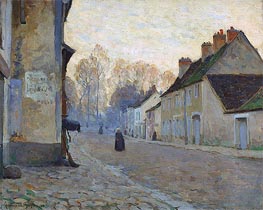
Rue du Canal, Moret-sur-Loing 1908
Oil Painting
$555
$555
SKU: GAC-14768
Clarence Gagnon
Original Size: 51.4 x 63.5 cm
National Gallery of Art, Ottawa, Canada
Clarence Gagnon
Original Size: 51.4 x 63.5 cm
National Gallery of Art, Ottawa, Canada
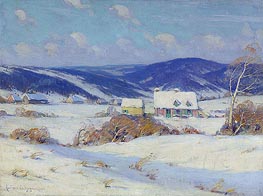
In the Laurentians, Winter 1910
Oil Painting
$631
$631
SKU: GAC-14769
Clarence Gagnon
Original Size: 60 x 81.3 cm
National Gallery of Art, Ottawa, Canada
Clarence Gagnon
Original Size: 60 x 81.3 cm
National Gallery of Art, Ottawa, Canada
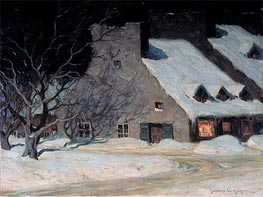
Street Scene, Quebec at Night c.1917
Oil Painting
$540
$540
SKU: GAC-14770
Clarence Gagnon
Original Size: 56.4 x 74.4 cm
National Gallery of Art, Ottawa, Canada
Clarence Gagnon
Original Size: 56.4 x 74.4 cm
National Gallery of Art, Ottawa, Canada
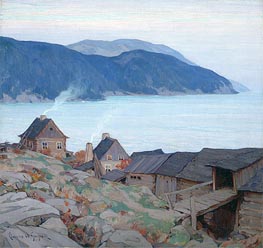
Evening on the North Shore 1924
Oil Painting
$690
$690
SKU: GAC-14771
Clarence Gagnon
Original Size: 77 x 81.6 cm
National Gallery of Art, Ottawa, Canada
Clarence Gagnon
Original Size: 77 x 81.6 cm
National Gallery of Art, Ottawa, Canada
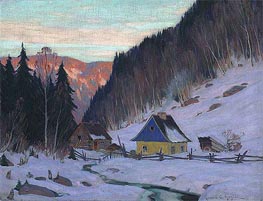
A Laurentian Homestead c.1919
Oil Painting
$531
$531
SKU: GAC-14772
Clarence Gagnon
Original Size: 51.5 x 66 cm
National Gallery of Art, Ottawa, Canada
Clarence Gagnon
Original Size: 51.5 x 66 cm
National Gallery of Art, Ottawa, Canada
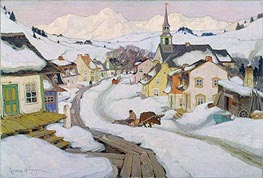
Village in the Laurentian Mountains 1925
Oil Painting
$818
$818
SKU: GAC-14773
Clarence Gagnon
Original Size: 89.2 x 130.7 cm
National Gallery of Art, Ottawa, Canada
Clarence Gagnon
Original Size: 89.2 x 130.7 cm
National Gallery of Art, Ottawa, Canada

The Pond, October c.1921
Oil Painting
$828
$828
SKU: GAC-14774
Clarence Gagnon
Original Size: 74.3 x 95 cm
National Gallery of Art, Ottawa, Canada
Clarence Gagnon
Original Size: 74.3 x 95 cm
National Gallery of Art, Ottawa, Canada
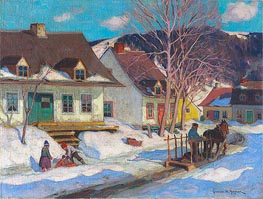
A Québec Village Street, Winter 1920
Oil Painting
$822
$822
Canvas Print
$70.69
$70.69
SKU: GAC-14775
Clarence Gagnon
Original Size: 56.5 x 74.2 cm
Art Gallery of Ontario, Toronto, Canada
Clarence Gagnon
Original Size: 56.5 x 74.2 cm
Art Gallery of Ontario, Toronto, Canada
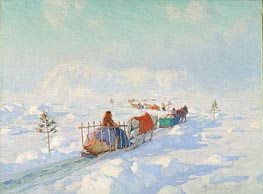
The Ice Bridge, Quebec n.d.
Oil Painting
$547
$547
Canvas Print
$68.99
$68.99
SKU: GAC-14776
Clarence Gagnon
Original Size: unknown
Musée du Québec, Quebec City, Canada
Clarence Gagnon
Original Size: unknown
Musée du Québec, Quebec City, Canada
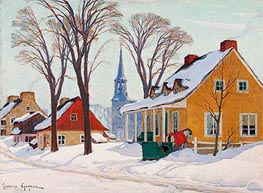
Winter Morning in Baie-Saint-Paul c.1926/34
Oil Painting
$658
$658
Canvas Print
$69.15
$69.15
SKU: GAC-14777
Clarence Gagnon
Original Size: 54.6 x 73.7 cm
Musée du Québec, Quebec City, Canada
Clarence Gagnon
Original Size: 54.6 x 73.7 cm
Musée du Québec, Quebec City, Canada
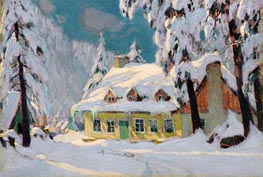
After the Storm c.1922
Oil Painting
$384
$384
SKU: GAC-16881
Clarence Gagnon
Original Size: 16 x 23.5 cm
Private Collection
Clarence Gagnon
Original Size: 16 x 23.5 cm
Private Collection